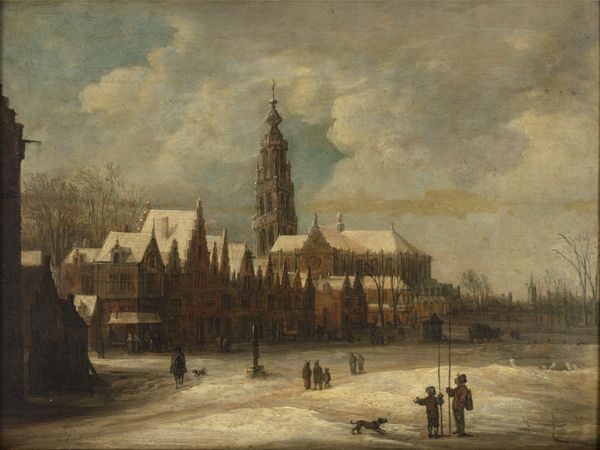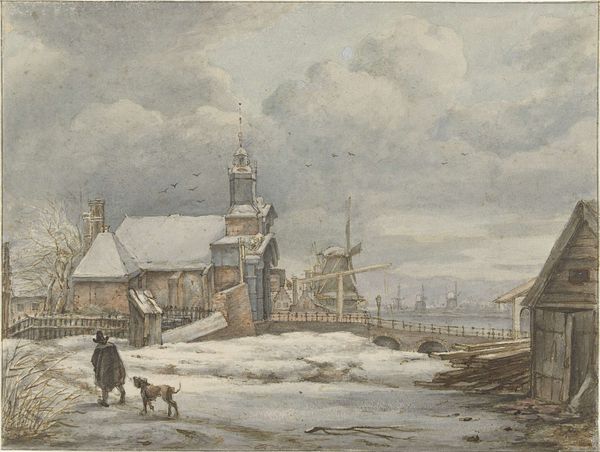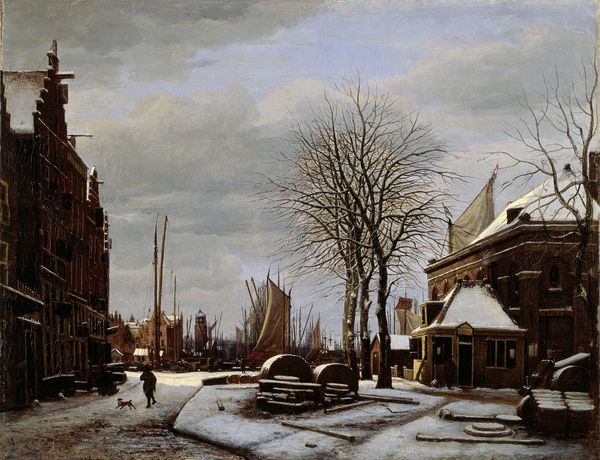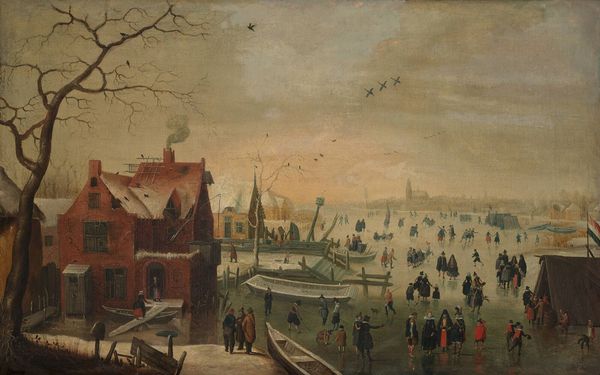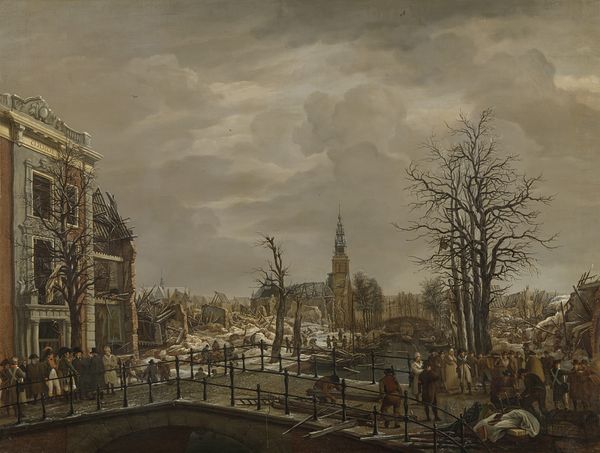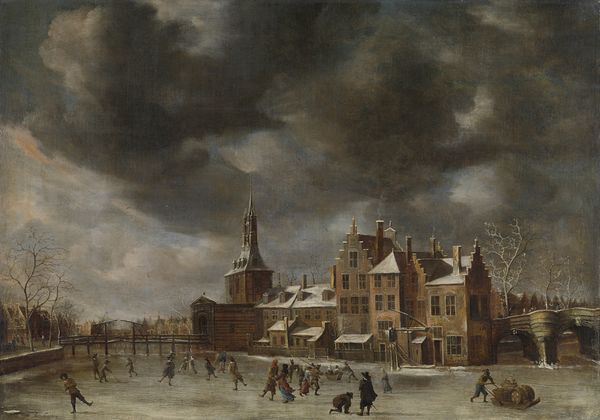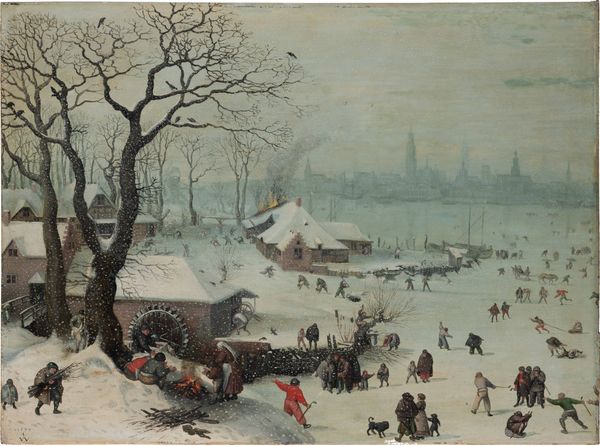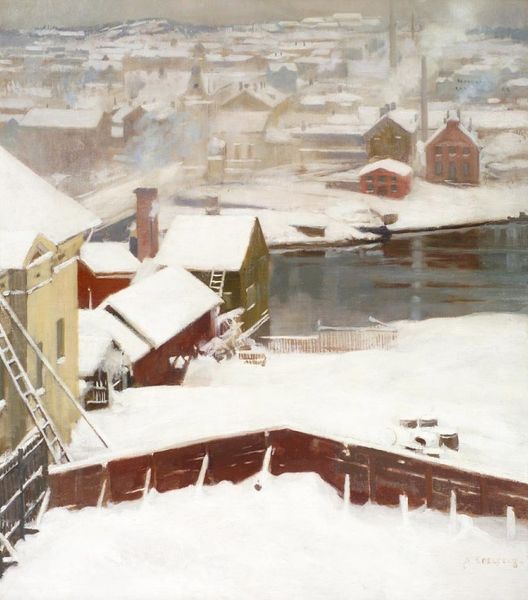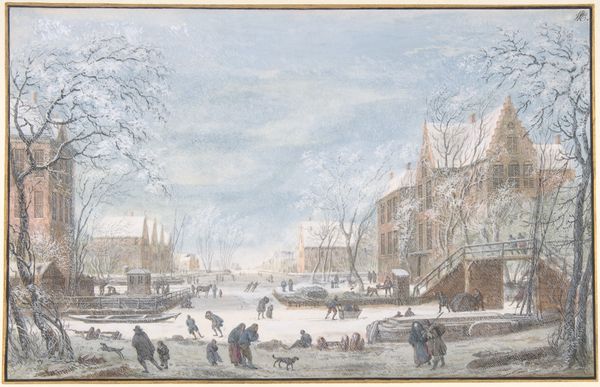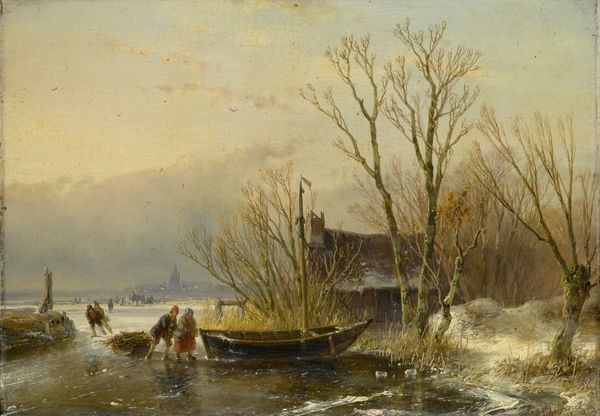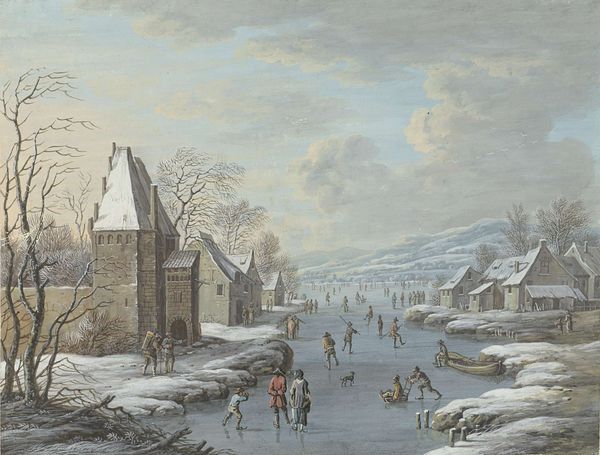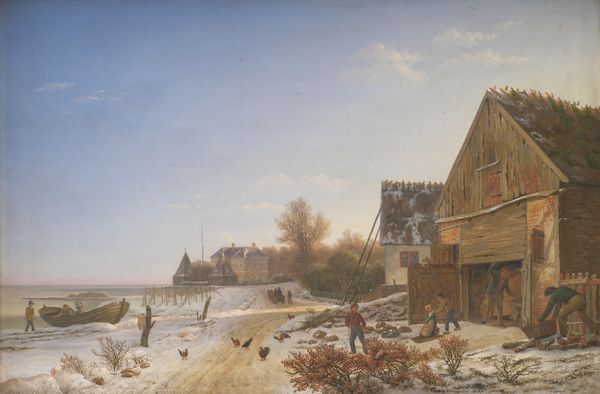
painting, oil-paint
#
urban landscape
#
dutch-golden-age
#
painting
#
oil-paint
#
landscape
#
oil painting
#
romanticism
#
cityscape
Dimensions: height 57 cm, width 48 cm
Copyright: Rijks Museum: Open Domain
Wouter Johannes van Troostwijk painted "The Raampoortje in Amsterdam" with oil on panel. It captures a wintery scene in Amsterdam, evoking the city's social and economic life during the late 18th or early 19th century. The Raampoortje, a city gate, serves as a focal point. It illustrates the infrastructure that shaped daily life and commerce. Painted during a time of political and economic change in the Netherlands, as it transitioned from the Dutch Republic to French influence, the painting may reflect a longing for the stability of the past. The frozen canal suggests the stagnation of trade due to winter, a common theme in Dutch Golden Age painting. To understand the image's significance, historians delve into city records, trade statistics, and social histories. The study of such paintings allows us to consider the dialogue between art, society, and institutional power.
Comments
rijksmuseum about 2 years ago
⋮
The 18th-century Raampoortje was part of Amsterdam’s city rampart near the Bloemgracht. The small gate gave access to the bleaching fields outside the city wall, where dyed cloth was laid out to dry on wooden frames, from which the Raampoortje (Frame Gate) got its name. Here we look from the bleaching fields past the houses on the Bloemgracht towards the cold and wintry city. The Westertoren rises in the distance. The gate was demolished in 1846.
Join the conversation
Join millions of artists and users on Artera today and experience the ultimate creative platform.
